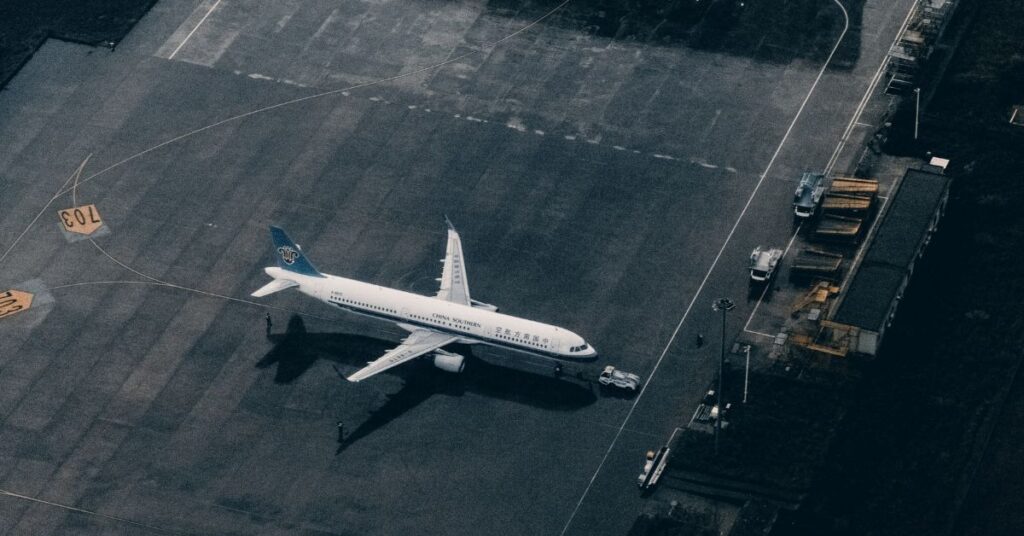On a seemingly routine day in the skies, United Airlines Flight UA770 found itself at the heart of an intense emergency situation. Passengers aboard had embarked on their journey with anticipation, but little did they know that their flight would soon take an unexpected turn. As uncertainty loomed and tensions rose, the professionalism and preparedness of the airline crew became paramount. This incident not only showcased the challenges faced during air travel but also highlighted the unwavering commitment to safety that defines modern aviation standards. Join us as we delve into what happened on that fateful flight and explore the broader implications for passengers and airlines alike.
The Emergency Diversion
On the day of United Airlines Flight UA770, passengers were settling in for a routine journey. Suddenly, the situation took an unexpected turn. The crew received alarming indications that something was amiss with the aircraft.
Without hesitation, the captain made the critical decision to divert. A calm voice filled the cabin, reassuring everyone that safety was their top priority. The plane altered its course toward a nearby airport known for handling emergencies.
As they descended, tension hung in the air yet hope flickered among those onboard. Passengers exchanged nervous glances but remained composed. Crew members executed their emergency protocols with precision and confidence.
The approach was swift but controlled as they prepared for landing. Everyone knew this diversion could be crucial not just for comfort but for ensuring everyone’s well-being during such uncertain moments on board.
Response from United Airlines and Passengers
United Airlines took immediate action following the emergency diversion of Flight UA770. The airline’s commitment to passenger safety was evident as they provided timely updates and support to those affected.
Passengers expressed a mix of relief and anxiety during the incident. Many praised the crew’s professionalism, while others shared their concerns about traveling in such circumstances. Social media captured real-time reactions, showcasing both gratitude for safe landing and frustration over unexpected delays.
United also launched an investigation into the incident, ensuring transparency throughout the process. They communicated openly with passengers about findings and measures taken to prevent future occurrences.
The experience served as a reminder that air travel can be unpredictable. While some felt shaken by the ordeal, many emerged with a renewed appreciation for flight safety protocols implemented by airlines like United.
Safety Protocols Followed by the Crew
When faced with an emergency, the crew of United Airlines Flight UA770 sprang into action. Their training kicked in immediately, showcasing their expertise and commitment to safety.
The first step was assessing the situation. Clear communication among the cabin and flight deck teams ensured everyone understood the gravity of what was happening.
Next, they followed established protocols for emergencies. Passengers were informed promptly about necessary procedures while remaining calm during a tense moment.
Safety equipment was prepared and checked diligently. Life vests, oxygen masks, and other gear were readily accessible should they be needed.
Throughout this process, the crew maintained a reassuring presence. They provided guidance without panic, ensuring that passengers felt secure amid uncertainty.
Such adherence to safety protocols is crucial in aviation. It’s not just about managing risks; it’s about fostering trust between airlines and travelers when it matters most.
The Importance of Flight Safety
Flight safety is paramount in the aviation industry. Every day, millions board aircraft, trusting that their journey will be smooth and secure. This trust hinges on rigorous protocols designed to mitigate risks.
When incidents occur, such as the United Airlines Flight UA770 emergency diversion, they remind us of the complexities involved in flying. These moments illuminate how vital training and preparedness are for crew members.
Safety measures extend beyond technical aspects; they involve communication between pilots, air traffic control, and ground personnel. Each layer of oversight enhances overall security.
Moreover, public perception plays a crucial role. Passengers need reassurance that airlines prioritize their safety above all else. Transparency about procedures fosters confidence in air travel.
Investing in continuous improvement is essential for maintaining high safety standards. Innovations and regular drills keep crews sharp and ready for any unexpected situations that may arise during flight.
Impact on Future Air Travel
The emergency diversion of United Airlines Flight UA770 serves as a pivotal moment in aviation history. Incidents like this remind airlines and regulators of the importance of preparedness and swift action.
Future air travel may see enhanced safety protocols, driven by lessons learned from such emergencies. Airlines will likely invest more in training their crews to handle unexpected situations with confidence.
Passengers are also expected to become more aware of their surroundings, understanding the importance of following instructions during crises. This increased vigilance can lead to a collective culture prioritizing safety above all else.
Additionally, technological advancements may emerge as airlines seek solutions for real-time problem assessment during flights. Innovations could change how we think about flight safety altogether, making the skies even safer for everyone involved.
Conclusion
The incident involving United Airlines Flight UA770 serves as a powerful reminder of the importance of prioritizing safety in air travel. When faced with emergencies, every second counts and the response from the crew can mean the difference between disaster and a safe landing.
The swift decision to divert played a crucial role in ensuring that all passengers and crew remained unharmed. The situation reinforces how essential it is for airlines to have robust training protocols in place. Passengers rely heavily on this training during unexpected events.
As we reflect on this emergency diversion, it’s clear that lessons learned will shape future practices within aviation. The commitment to flight safety not only fosters passenger trust but also sets higher standards across the industry.
While flying remains one of the safest modes of transportation, incidents like this remind us that vigilance is key. Each successful operation enhances our confidence in air travel and promotes an ongoing dialogue about safety measures among airlines, regulators, and travelers alike.






